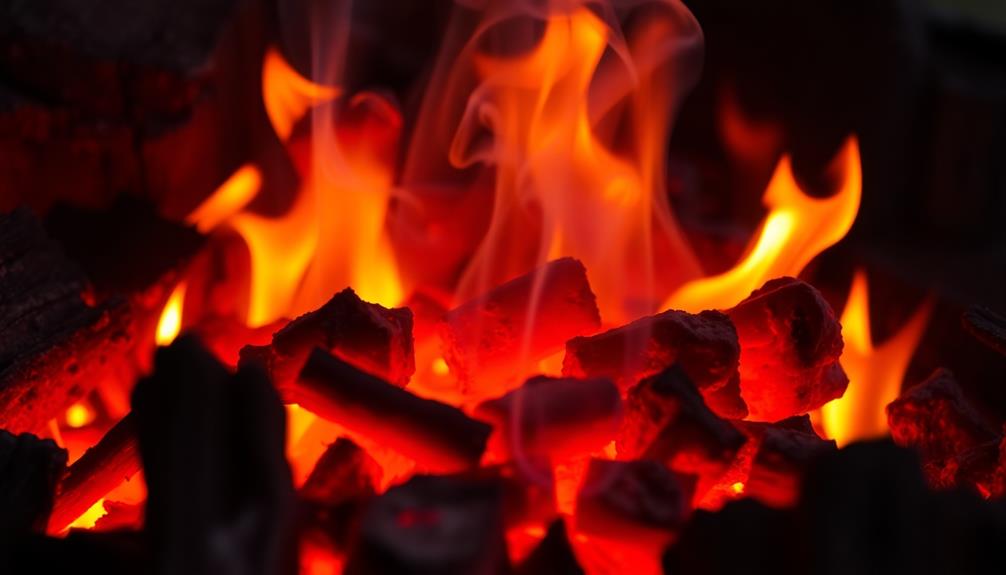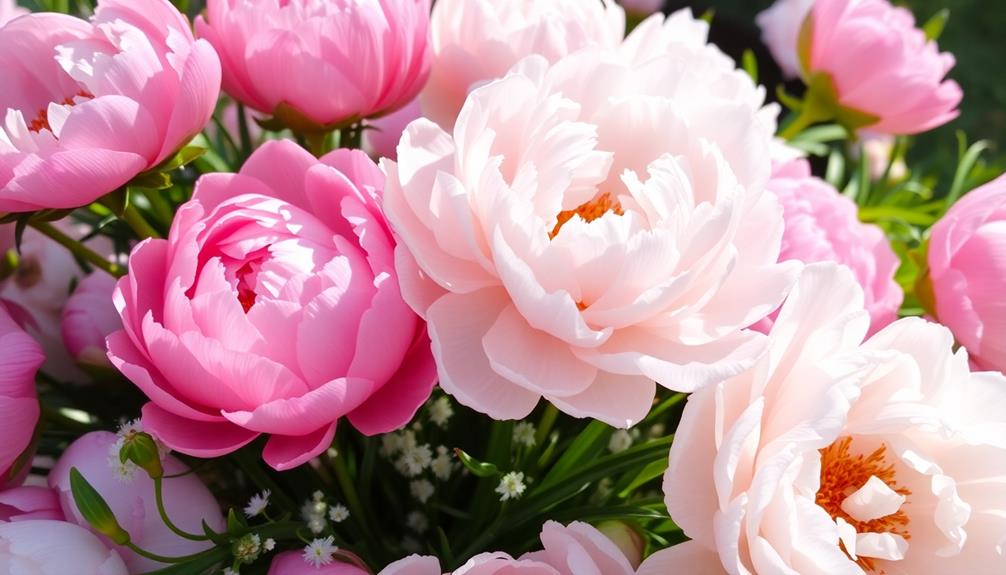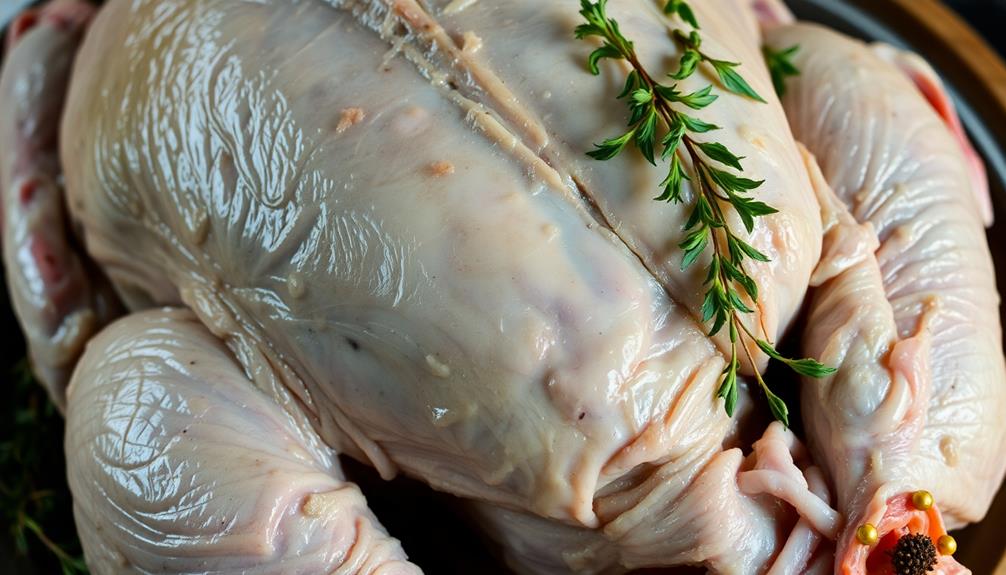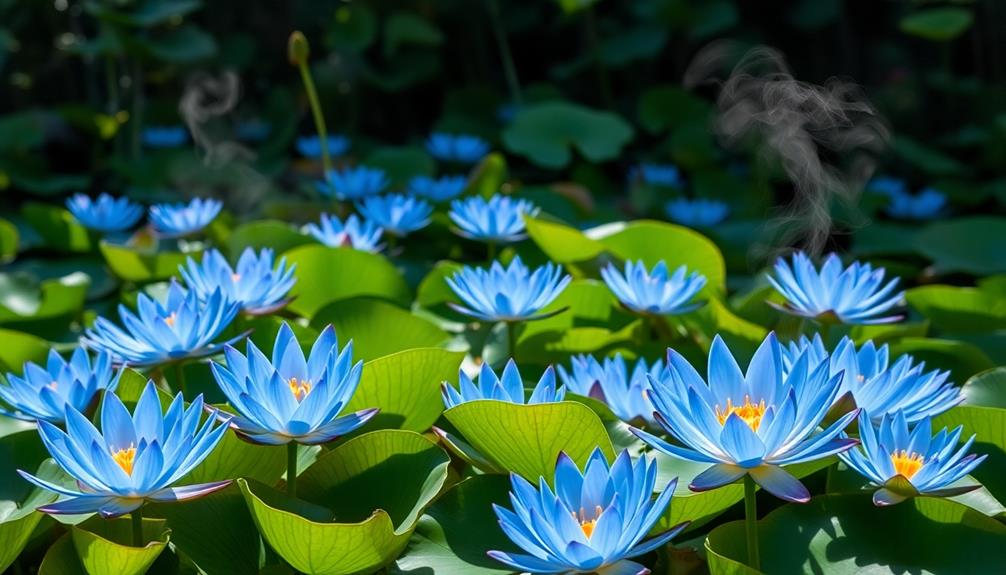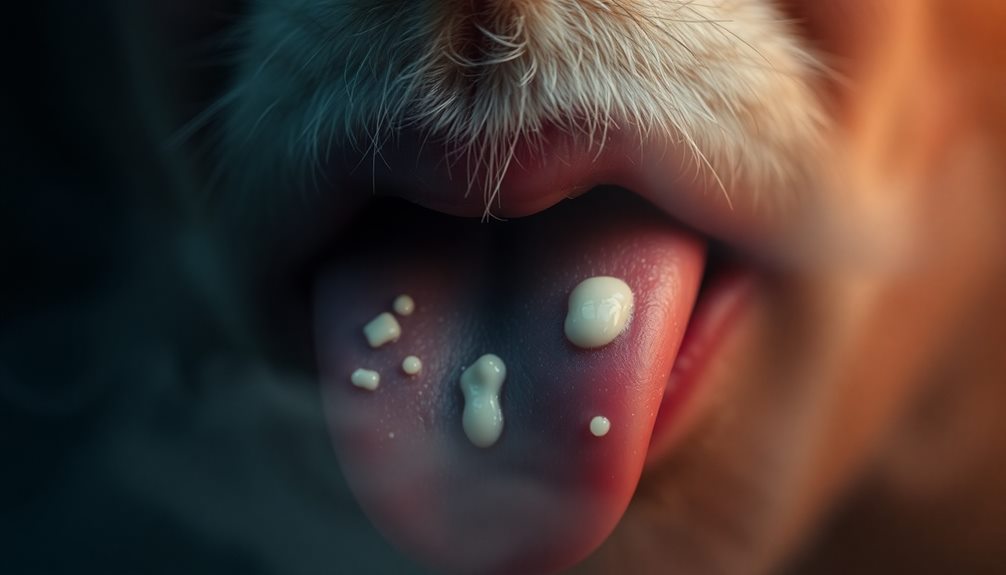Fire can smell different depending on what's burning! If you're near a campfire, you might catch a warm and earthy scent from burning wood, which feels cozy and nostalgic. On the other hand, if there's an electrical fire, you could smell something sharp and pungent, like burning plastic—it's a sign to stay safe! Wildfires can create a strong, smoky smell that fills the air, and burnt food can smell variously from sweet to acrid. Each aroma tells a story, so keep your nose alert! There's so much more to discover about these intriguing scents!
Key Takeaways
- The smell of burning wood creates an earthy, nostalgic aroma reminiscent of cozy campfires and outdoor gatherings.
- Burning plastics emit a strong, pungent chemical odor, often indicating hazardous situations or electrical fires.
- Electrical fire smells are similar to burning insulation and hot metal, signaling potential danger.
- Different materials produce unique odors, such as acrid scents from house fires due to burning furniture and textiles.
- Wildfires generate a pungent smell that can significantly affect air quality and evoke a sense of danger.
Introduction
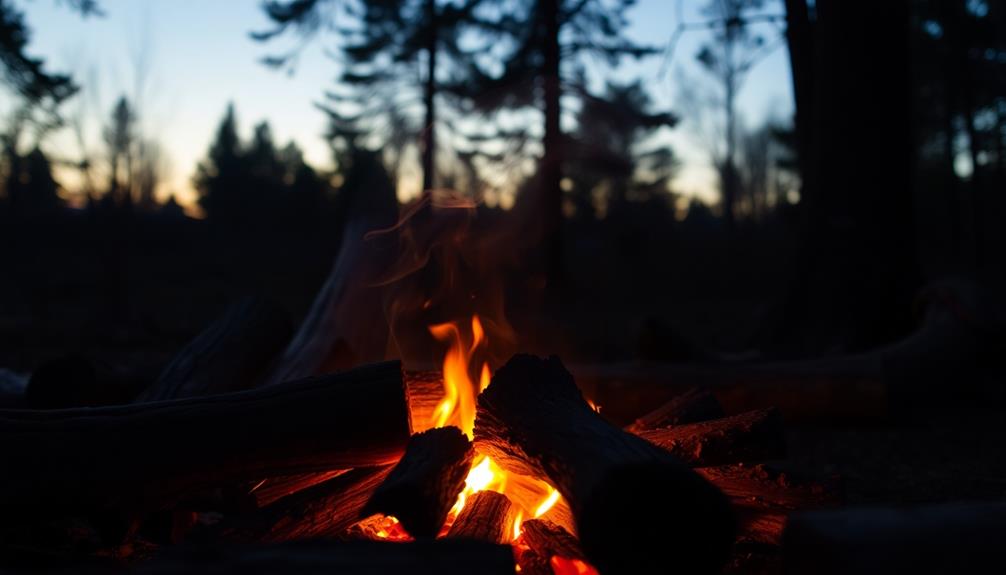
Have you ever stopped to consider how the smell of fire can evoke different feelings and memories? The scent of fire can tell you a lot about what's happening around you. For instance, when you catch a whiff of burning wood, it might remind you of cozy campfires and sweet marshmallows.
But not all fire smells are pleasant. An electrical burning smell or the odor of burning plastic can signal danger. These scents often mean something serious is going on, like electrical fires, which can be very hazardous.
It's important to take these warning signs seriously. If you identify the source of an unusual smell, you might prevent a fire from becoming worse. The smell of burning plastic can come from melting insulation around wires, which is a big red flag!
Knowing how to recognize different fire smells is crucial for your safety. Every scent tells a story, guiding you in protecting yourself and your home.
Description of the Smell
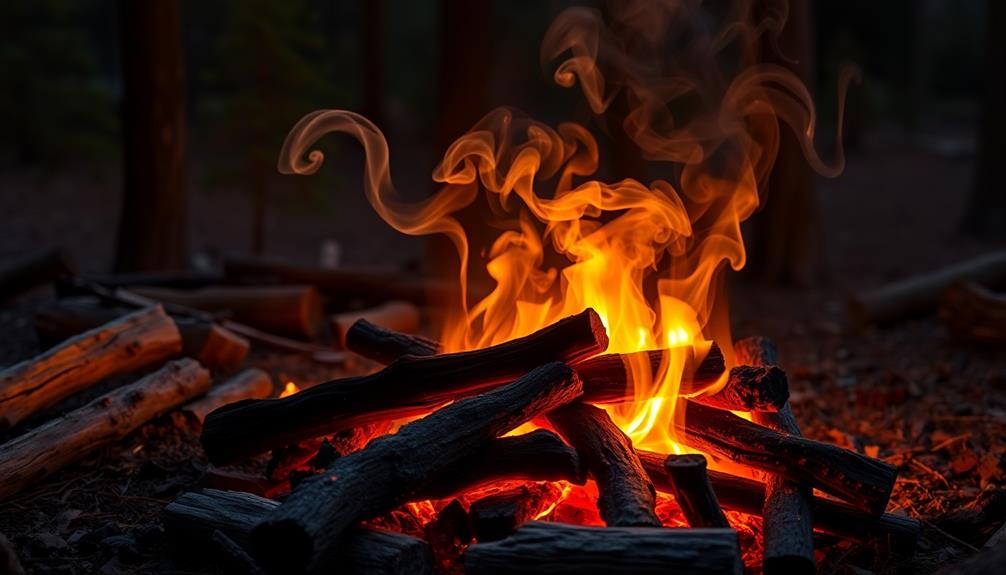
When you encounter the smell of fire, it often presents a distinctive burning odor that can vary greatly depending on what's ignited. If it's wood or leaves, you might catch an earthy scent that brings back memories of campfires and bonfires, filling the air with warmth and nostalgia. However, when the source is synthetic material, the scent can be harsher, with sharp, chemical undertones that make it less pleasant and more alarming. The contrast is as stark as the difference between smelling smoke and the fragrance profile of Versace Eros Flame, which captivates with vibrant notes of citrus, pepper, and warm woods, evoking a more refined and seductive experience. Whether comforting or jarring, the scent of fire always leaves a lingering impression.
But if the fire has already started burning plastics or other synthetic materials, you'll notice a strong, pungent odor that's more chemical and rubber-like. This can be alarming, signaling potential hazards.
Electrical fire smells are different too. They often remind you of burning insulation or hot metal, which can indicate a serious danger. These acrid scents can make your nose wrinkle, and they might be hard to ignore.
The intensity of these smells grows as the fire spreads, wrapping around you like a thick blanket. It's fascinating how each type of fire creates its own unique aroma.
Whether it's a smoky, comforting smell or a sharp, chemical scent, understanding these odors can help you stay safe and aware. So, the next time you catch a whiff of smoke, take a moment to identify what kind of fire you might be dealing with!
Source and Composition
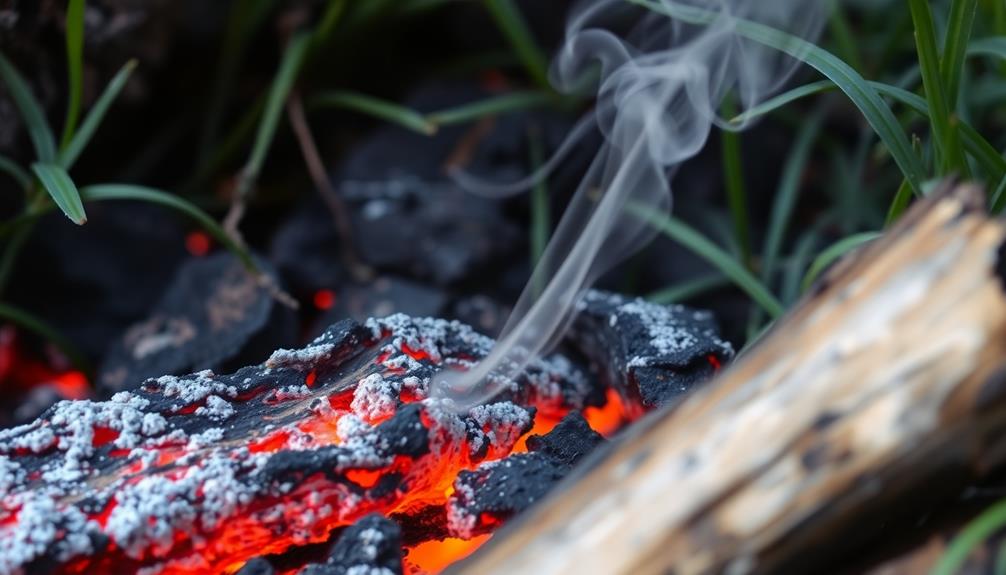
The distinct smell of fire stems from the combustion of various materials, each contributing unique aromas. When organic materials like wood burn, they release volatile organic compounds, or VOCs. You might notice that burning wood gives off a sweet, smoky scent. This happens because it breaks down into lovely phenols and carbon compounds.
But not all fires smell the same! If you've ever smelled burning plastic, you know it can have an acrid odor, kind of like rubber. This smell comes from synthetic polymers breaking down during combustion. On the other hand, burning wood tends to have a much earthier, almost sweet aroma due to the release of organic compounds like terpenes. Similarly, many people are curious about what gunpowder actually smells like—often described as a sharp, metallic tang with hints of sulfur. These distinct smells are a result of the unique chemical reactions that occur during various types of combustion.
The temperature and oxygen availability during burning also play a big role in what you smell. Hotter fires usually produce sharper, more intense odors that can fill the air quickly.
Plus, smoke is made of particulate matter, gases like carbon monoxide and carbon dioxide, and many other chemical by-products. All of these elements combine to create that familiar scent we often associate with warmth and safety.
Next time you catch a whiff, think about all the different materials and processes that go into creating that incredible smell of fire!
Typical Scenarios or Environments
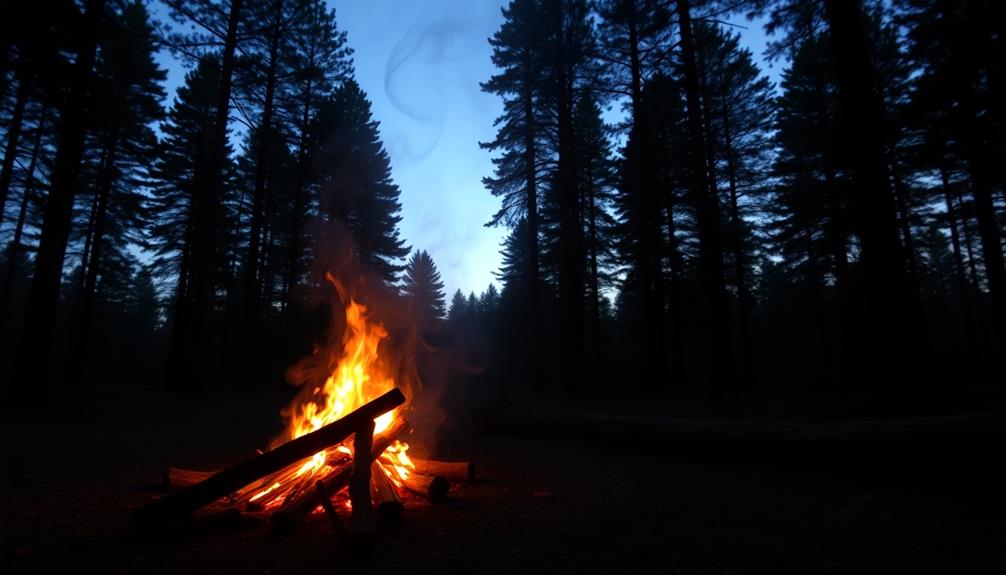
In various scenarios, the smell of fire can transport you to different memories and environments. Picture sitting around a campfire, where the warm, smoky aroma of burning wood fills the air. It's a comforting scent that reminds you of fun times with friends and family.
However, not all fire smells are pleasant. When you encounter an electrical fire smell, it often resembles burning plastic or rubber. This can happen when insulation surrounding electrical appliances melts. It's a sharp, acrid odor that signals danger, urging you to act fast for electrical safety.
House fires create their own distinct smells, too. The acrid odors from burning furniture and textiles can be overwhelming, making it hard to breathe and see through the smoke.
Wildfires produce a pungent smell of charred vegetation that spreads for miles, affecting air quality.
Don't forget about burnt food! Depending on what's cooking, the smell can vary from acrid to sweet, often leaving a lingering aroma in the air.
Each of these scenarios highlights how the smell of fire can evoke different feelings, from joy to urgency.
Emotional or Cultural Associations
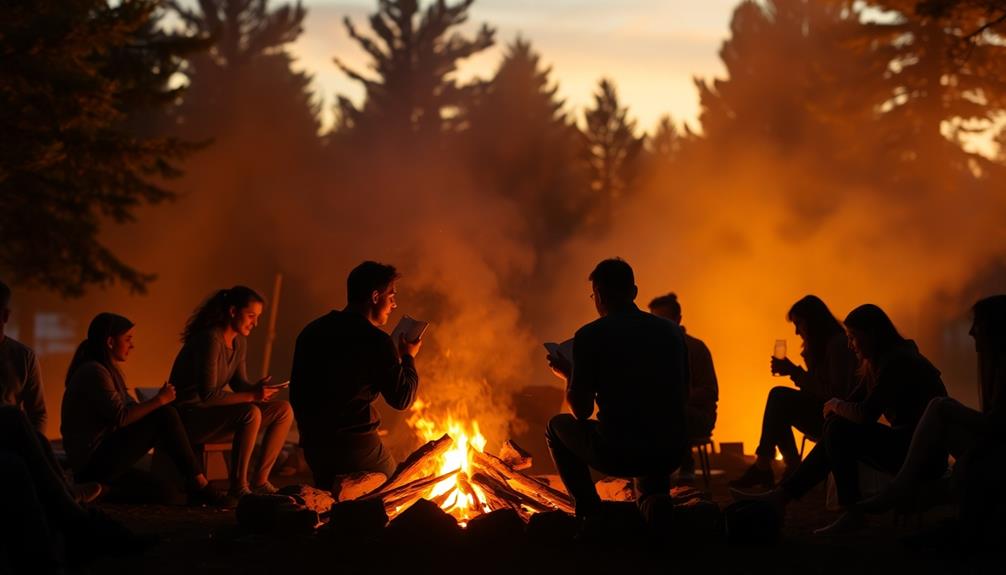
Associating the smell of fire with deep emotional and cultural connections can evoke powerful memories. When you catch a whiff of smoke, it might remind you of cozy campfires with friends or family gatherings filled with laughter. The warmth and comfort of those moments create a sense of nostalgia that wraps around you like a favorite blanket.
In many cultures, fire plays a big role in rituals and celebrations. Think about bonfires during festivals or the burning of incense in spiritual practices. These activities foster communal bonding, bringing people together in shared experiences. The scent of burning wood or herbs can make you feel connected to others, creating lasting memories.
Fire also symbolizes transformation and renewal. In some traditions, burning effigies or lighting ceremonial fires marks new beginnings.
But remember, fire has a dual nature. While it can offer warmth and comfort, it can also bring feelings of danger or loss. This mix of emotions shows how the smell of fire can stir different feelings in each person. It's a reminder of life's complexity, where beauty and danger often exist side by side.
Health or Safety Considerations
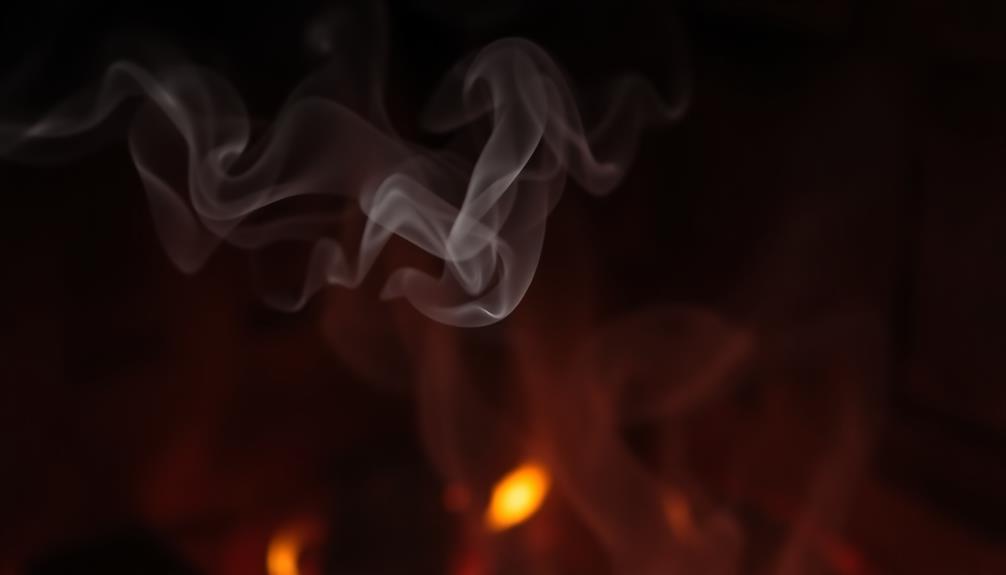
Nostalgic memories tied to the smell of fire can quickly turn into a health concern, especially when that scent signals danger. If you smell an electrical fire, it's essential to act fast! That smell could mean toxic fumes are filling the air, like harmful chemicals from burning plastic or insulation.
These fumes can cause real respiratory problems and make conditions like asthma worse. When insulation burns, it releases dangerous substances, including polychlorinated biphenyl (PCB) by-products, which can lead to long-term health risks, including cancer. The smell of burning rubber or plastic isn't just an unpleasant odor; it can indicate serious issues.
If you notice these smells, don't wait! Evacuating the area is the safest choice. Open windows to ventilate the space and let fresh air in. This helps reduce the health risks from inhaling those nasty fumes.
Final Thoughts
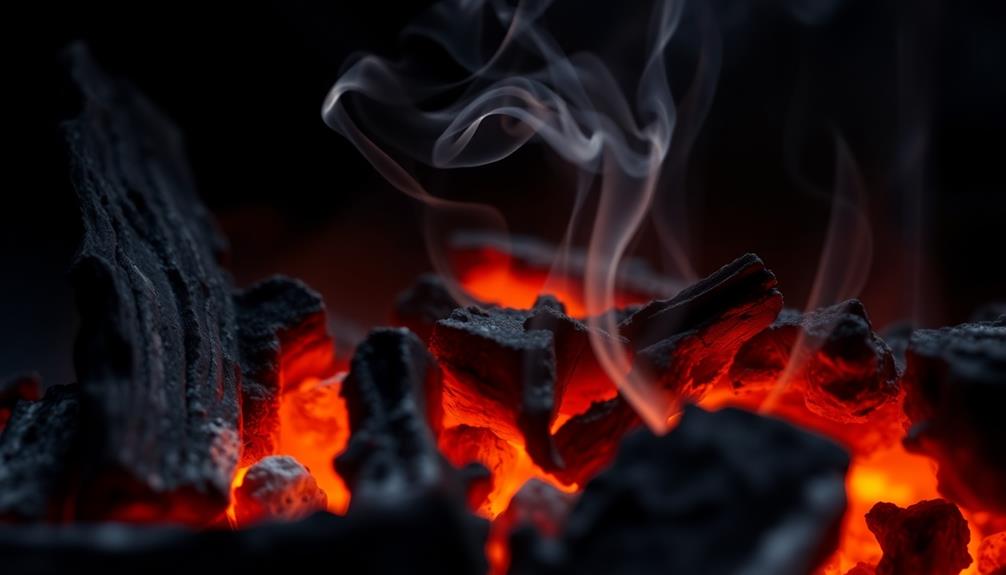
Fire's smell can evoke powerful emotions and memories, but it's crucial to stay alert to its signals.
When you catch a whiff of burning plastic or rubber, it might mean there's an electrical fire nearby. This acrid smell can be overwhelming, and it's a warning sign you shouldn't ignore. It often means that insulation around wires is melting, which can signify that your electrical system is in danger.
Always remember that these smells can serve as early warning signs of a potential fire hazard. If you ever notice a fishy odor, it could mean burning chemicals are present, which is another red flag.
To stay safe, make sure you have a fire extinguisher handy and conduct regular electrical inspections.
Keeping your home safe is super important! Familiarizing yourself with these smells can help you respond quickly if danger arises.
Frequently Asked Questions
How Would You Describe the Smell of a Fire?
You'd notice a smoky, acrid scent when fire burns, varying with materials. Wood offers earthy sweetness, while plastics emit sharp, chemical odors. The smell evokes nostalgia, reminding you of cozy gatherings and outdoor adventures.
What Scent Is Fire?
When you think about the scent of fire, you might imagine a blend of smoky aromas and sweet notes from burning wood. It evokes warmth, nostalgia, and sometimes, a sharp, acrid smell from electrical fires.
What Do Burns Smell Like?
When you encounter burns, you'll notice acrid, charred scents, often reminiscent of burnt flesh or hair. Electrical burns give off a pungent plastic smell, while wood burns release sweet, smoky aromas that can vary significantly.
What Smell Indicates an Electrical Fire?
If you smell burning plastic, rubber, or a fishy odor, it might indicate an electrical fire. Don't ignore these signs; evacuate immediately and call emergency services to prevent a potentially dangerous situation from escalating.
